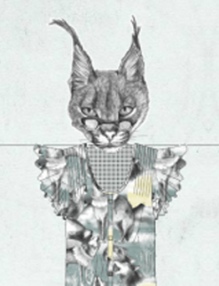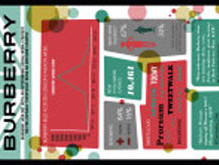This is a PART 2 of my essay. PART 1 was an introduction and it was about theoretical background – sociology of fashion.
Fashion history vs. class division
Fashion has always taken a giant part of every known civilizations’ culture and class differentation. The rich were authorities in a whole culture e.g. religion. Looking back, to the first people era: Eve was the one who put a flower over her ear, just to make Adam oblivious to her. Especially a luxury fashion history is signifant. It is because lower classes always has taken an example from higher classes. For instance, the ancient Egyptians put a great emphasis on fashion:
“The royal Pharoahs dressed flamboyantly and engaged the services of the best artistes, jewelers, craftsmen to fabricate their wardrobe” (Okonowo U., page 15).
If we track to the Greek and Roman empires, we would see how important fashion trading was at that time. The Cretan period is known as the first one in our (European) history that influenced our fashion in a such large extent. Crete was a trade center where many ancient cultures were frequently meeting. Representatives of the different social classes wore different apparels, e.g. men working in production sites wore only shorts and women who took care of hearth showed their beauty by wearing sophisticated belts around their waists. Greeks – Cretans descendants – were a reflection of intellectual judgement. Also a sexual division was more pronounced. On the other hand, ancient Roman fashion was the beginning of today’s Italian style. A class division was showed by different shoes colour. Women’s fashion was highly separated from men’s wear, and what is the most important: Romans were the first who made fashion seasonal.
After Roman Empire the Byzantine Empire and the Middle Ages came (~450-~1500). Events following the ancient ages brought a priorities change. In Byzantine Empire civilians had a freedom of choosing their wardrobe, there was a class differentiation in that field, also gender diversity was not about materials. Also, this period witnessed a rise of celebrity fashion: Empress Theodora, Justin I wife, was especially a stylish woman. Women at that time imitated her style by using cheaper materials. The Middle Ages, a period that came after the Byzantine Empire, was not a very influential time in a European history. Developing monarchies and political systems was much more important than fashion. What is more, religion and catholic church called for a focus on inner beauty more than on appearance. However, people at that time cultivated Roman bathing tradition. It was also a time of make-up popularity e.g. eye shadow in England and red lipstick in Spain.
The periods which brought a fashion development revival were the Renaissance (15th and 16th centuries) and Baroque (17th century). At that time cultural progression, innovation and improvement of human life were the most important aspects of an intellectual elite’s work. Italy, France, Spain, Portugal and England were centers of this period. Clothes and jewelry were class belonging indicators, materials and jewelry production had its’ bloom. Also many up-to-date styles and trends are inspired by the time of Renaissance and its’ conquests, especially by Italian style, which was the Roman Empire legacy. Nevertheless, the following fashion-progress period took place mainly in France in the 17th century, when the Sun King – Louis XIV ruled the country, but also the European fashion style, by the end of his reign France was a capital of fashion:
“He was an exceptional ruler who reigned for 72 years and had enormous political, economic and cultural strength that enabled him to position France as a major force of global politics, economy, lifestyle and fashion. He portrayed a sophisticated and refined taste, lifestyle and product choices, ranging from fashion, food, art, theatre and literature. The reign of Louis XIV from 1661 marked the return of opulence and exuberance and his tastes in luxury influenced the royal families and aristocrats of the entire continent” (Okonowo U., page 21).
Even if Paris is still one of the most prominent fashion centers in the world we have to remember that 20th century brought events like social and cultural revolutions in the USA and UK, high technology changes which let consumers acknowledge trends and events which are happening around the globe.
According to this quick fashion history reminder we may assume two issues:
-
There are some countries which traditionally have a great position in fashion industry. The same countries are highly powerful on economic and political fields.
-
Usually fashion goes from upper class (which now can be identified with celebrities) and luxury fashion to lower class and non-luxury trends.
In my essay I will tell you more about that issue and compare this situation with communistic times in Europe where fashion was nothing but a trivial issue.

Previous:
Fashion and capitalism synergy – why fashion development is possible only in rich countries? PART 1

Next:
Fashion and Capitalism Synergy PART3: Today’s fashion industry most prominent counties
You may also like
-
 17 Jun
17 JunGoogle Geek Chicks do it g00d!
fashion marketingI was just surfing the Internet when a short article caught my eye. That was ...
-
 21 Dec
21 DecWWW for fashion: a good plan is a must
fashion marketingRecently, I improved my skills in creating websites – especially one’s concerning layouts. In an agency I ...
-
 18 Oct
18 OctFashion and capitalism synergy PART 2
fashion marketingThis is a PART 2 of my essay. PART 1 was an introduction and it ...
-

